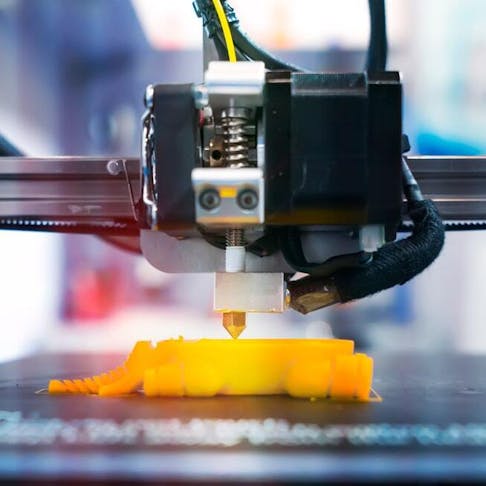Slicer software is a foundational component in the Fused Deposition Modeling (FDM) 3D printing process, serving as the intermediary between a CAD model and the printer hardware. Without it, a 3D printer cannot interpret or fabricate a design. The slicer translates 3D geometry, typically exported as an STL, OBJ, or 3MF file, into precise, machine-readable instructions (G-code) that guide the printer through every movement, temperature change, and extrusion command.
This article provides a detailed overview of slicer software, its core features, and how it enables 3D printers to produce functional and dimensionally accurate parts from digital designs.
What Is a Slicer in 3D Printing?
A slicer is a piece of 3D printing software that acts as a link between the digital model (generated on a computer) and the actual model (constructed by the 3D printer itself). The 3D printing slicer software transforms the digital model into G-code printing instructions. These instructions are fed to the printer, which, in response, begins the build process until the object is complete.
For more information, see our guide on 3D printing.
How Does a 3D Slicer Work?
3D slicer software functions by converting a 3D model into machine-readable instructions that a 3D printer can execute. This process involves multiple stages of data processing and optimization to ensure accurate and efficient printing. First, the user inputs key printer and material parameters into the slicer software, including layer height, nozzle diameter, print speed, material type, and extruder configuration. These settings ensure the slicing output is tailored to the specific printer and filament. Next, the digital 3D model is imported into the slicer. Depending on the CAD software used to design the model, supported file formats typically include .STL (most common), .OBJ, .3MF, and .AMF. Once the model is loaded, users can adjust orientation, position, and scale to fit the build volume or modify the model dimensions. This includes capabilities such as model rotation, mirroring, and rescaling, enabling flexible preparation of prints without changing the original CAD file. Finally, the slicer processes the geometry of the 3D model and divides it into a series of 2D layers based on the selected layer height. It then generates a G-code file, which contains detailed instructions for the printer, including movement paths, extrusion commands, temperature control, fan speeds, and retraction settings.

What Does Slicer Software Do in 3D Printing?
A slicer acts as a middleman between a 3D CAD model—which will be saved in one of the file formats, particularly STL—and the 3D printer. As the name suggests, a slicer slices the 3D model. It determines how each layer of the sliced model should be printed and the tool path the printer needs to follow to print a given layer correctly.
What Are the Features of 3D Slicers?
3D slicers have the following distinctive attributes or features:
- Accept DICOM and Other Formats of Images: DICOM (Digital Imaging and Communication) is a standard employed by the medical industry to store, transmit, handle, and print information in medical imaging. A DICOM file is obtained from CT scans of various parts of the human body and can be converted into STL file formats, which the 3D printing slicer software can process.
- 2D and 3D Visualization of Transforms: In the 3D printing slicer software, it is possible to have a 2D and 3D visualization of the digital model. The 3D model can be split into 2D slices viewed in different anatomical directions, known as the coronal, axial, and sagittal planes. The XYZ spatial configuration is capable of sufficiently interpreting these planes.
- Registration and Interactive Segmentation of Image/Data: The user interface of the 3D printing slicer software has an extensive set of tools required for image fusion tasks or registration. The functionalities include manual and automated image alignment. Image warping is also possible.
What Is 3D Slicer Software?
3D slicer software is used in the conversion of CAD models in .STL file formats or any other file formats, such as .3DF and .OBJ, to a set of commands that the printer can understand. Most 3D printers come with their own 3D printing slicer software. However, there is other third-party software like Chitubox that can be adapted to most printers.
Below are some examples of 3D slicer software:
- Cura Slicer Software: Cura is a popular 3D printing slicer compatible with many 3D printers. The 3D printer company, Ultimaker, developed this software, and it is completely free and open source. Cura supports most 3D file extension formats, including.OBJ, .X3D, .STL, and .3MF. Cura is easy to use and is perfect for both beginners and professionals.
- Creality Slicer Software: The Creality Slicer is 3D printing software based on the Cura software made by Ultimaker. At first glance, it looks like Cura except for the differentiating features in the design. It is made specifically for Creality 3D printers, including the Ender-3 version. However, for compatibility with other printers, blank profiles have to be created. At the moment, Creality is compatible with Windows.
- Chitubox Slicer Software: Chitubox slicer software was designed by the Chinese Company CBD-Tech. This third-party software is compatible with most resin-based 3D printers, such as DLP, SLA, and LCD. Chitubox works well with various file formats.
- ideaMaker Slicer Software: ideaMaker is slicing software developed by Raise3D. It is specialized software made for Raise3D printers. Nonetheless, the ideaMaker slicer has been optimized to work with a variety of FDM printers available on the market today.
- Simplify3D: The Simplify3D slicer works well with almost every printer, although you must pay to use it. The 3D printing slicer software was made especially for pro users. Simplify3D is compatible with many 3D printing profiles, and if a specific model is not on the list, it can easily be added rather than switching to new slicer software.
For more information, see our guide on the Best Slicer Software for 3D Printing.
What Are the Graphic Area Elements of a Slicer?
3D printing slicer software comes with a range of 3D graphics area elements, which are listed below:
- Support Brim: A brim is made of a few concentric layers. These are attached to the edges of the 3D model and extend from the print bed. It is part of the support structure in a 3D printing process. A brim keeps the print in place while the printer works on the part. As a result, a brim prevents warping and ensures that the contact with the build plate is rigid.
- Support Raft: A 3D printing support raft is a flat piece of material that functions as the base support of the print. It is wider than the first layer of the print. Though similar to the brim, they play different roles. When comparing the raft vs. the brim, the raft is always placed beneath the print or object, while the brim goes around it.
Why Can't a 3D Printer Be Used Without Slicer Software?
A 3D printer can't be used without slicer software because its functionality depends on it. Such printers need a slicer to translate the required information from the 3D CAD model of the part into G-code, directing the printer on how to print the part layers effectively.
What Are the Alternatives to 3D Slicers?
There are many alternatives to 3D slicers, each with its distinctive features and designs. These include:
- Vesalius3D: Vesalius3D is a 3D printing software noted for its high-quality features. It supports the visualization of anatomical structures, patient-specific structures, etc. The software incorporates an effective management system that proves helpful in the medical field. It shows clear and detailed structures, along with a beautiful display of the diagnostic procedures.
- Eliza: Eliza is 3D software that provides a perfect viewing experience for digital imaging and communications (DICOM) in medicine. It helps medical experts obtain detailed views of various body organs, enabling them to conduct effective research and analytical work. Eliza also comes with features such as label and edit segmentation, hundreds of filters, and precise measurement capability.
- InVesalius 3: InVesalius 3 is an open-source 3D software for magnetic resonance and computed tomography images. The software is relevant to the medical, educational, and forensic fields.
Frequently Asked Questions About Slicers in 3D Printing
How Is the 3D Model Translated by 3D Slicer Software?
The 3D model is translated using the 3D slicer software, which breaks down the model into a series of 2D layers or slices. The slicer converts them into step-by-step instructions (called G-code) for the printer to follow. It takes note of various geometric and structural aspects of the model. Each slice is sent as individual steps in the operation.
What Skills Are Required To Create 3D Printing Slicing Software?
To earn a spot in the 3D printing space, some skills are needed. In order to develop 3D printing slicing software, familiarity with the G-code language is essential. A developed 3D engine is also needed. Various types exist, such as Unreal Engine, Unity, and Eyeshot.
Is the Quality of a Print Affected by the Slicer Used?
Yes, the quality of a print is affected by the type of slicer used. The selection of a slicer depends on the complexity of the models to be sliced and the method of slicing. The difference may not be apparent on simpler models, but more complex designs reveal changes that can be pointed out.
Summary
This article provided a review of the role that slicer software plays in 3D printing. To learn more about 3D printing slicer software and to evaluate how it can be applied to your products, contact a Xometry Representative.
Xometry provides a wide range of manufacturing capabilities, including 3D printing and value-added services for all of your prototyping and production needs. Visit our website to learn more or to request a free, no-obligation quote.
Disclaimer
The content appearing on this webpage is for informational purposes only. Xometry makes no representation or warranty of any kind, be it expressed or implied, as to the accuracy, completeness, or validity of the information. Any performance parameters, geometric tolerances, specific design features, quality and types of materials, or processes should not be inferred to represent what will be delivered by third-party suppliers or manufacturers through Xometry’s network. Buyers seeking quotes for parts are responsible for defining the specific requirements for those parts. Please refer to our terms and conditions for more information.


